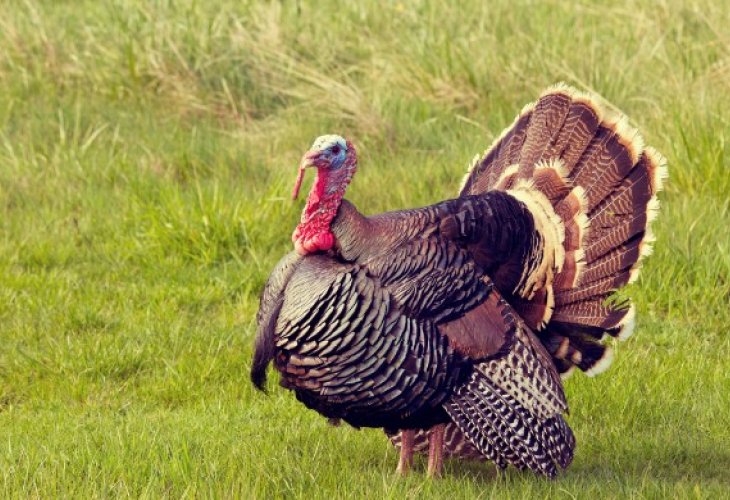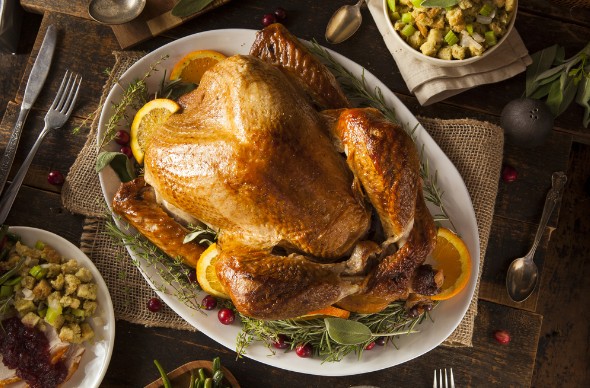Where Does It Say We're Allowed to Eat Turkey?
On the controversy surrounding the kosher status of turkey, which began 100 years ago

Many of the basic food products we consume daily, which we've grown accustomed to considering kosher without question, have experienced such storms and upheavals that they might actually be completely forbidden, without us knowing the magnitude of their complexity. For instance: Could the schnitzel or pargit (which is actually a deboned chicken thigh...) or even the common chicken be suspected of being an impure bird, due to various crossbreeding that chickens underwent with unidentified species to improve their rapid reproduction, thus making all their descendants forbidden? Or is it even permissible to eat turkey, and might this bird be among the impure species? The answer lies in a question that might sound like a Purim joke: "Where is it hinted in the Megillat Esther that it's permissible to eat turkey?" But let's not get ahead of ourselves...
Unlike mammals and beasts, for which the Torah took pains to elaborate what is permitted to eat and what is forbidden, even providing us signs to identify permitted species through bodily characteristics such as chewing cud, having split hooves and cloven feet, with birds, the identification of what is permitted and what is forbidden is very ambiguous. The Torah did not specify the signs of a kosher bird, but rather only listed what is forbidden to eat, naming twenty-four types of impure bird species, with all other bird species being permitted by default. Indeed, someone who is truly knowledgeable and recognizes those impure species in a way that he clearly identifies the appearance of those impure species, and additionally, knows with certainty the original name of each bird and whether it is the impure bird mentioned in the Torah – if he is truly such an expert, he can start eating all of the tens of thousands of bird species that fly around the world without worrying about consuming an impure bird.
But since not everyone is fortunate enough to be such an expert... our Sages made it easier for us and defined that any bird that is predatory is known to be an impure bird. They gave us three signs by which we can identify a kosher bird: it has an extra toe, meaning one of the toes is longer; it has a crop, which is a kind of small food storage in the throat area, somewhat reminiscent of cud-chewing; and the membrane of its gizzard can be peeled by hand without needing a knife. However, in reality, these signs are not the final word... as the Gemara ruled, one should not eat any bird unless there is a "tradition" that our ancestors ate this bird.
 Turkey
TurkeyNow to the matter at hand: About a hundred years ago, writings were circulated throughout Europe, some containing terrible defamation against world-renowned Torah scholars who dared to permit a new type of bird called "English Hind," which came from the new India (America) conquered by the English. This bird was not at all similar to the types of birds and chickens that Europeans were accustomed to eating, and thus a great outcry arose: How could they permit a bird without a "tradition"? Moreover, that bird had several characteristics that might resemble the appearance of an impure bird, for example: it did not have feathers like a chicken, its legs were unusually tall, and even its back was curved like a hoopoe, not to mention the strange red neck it has, which changes color in its body folds when angry. Additionally, this bird used to grow wild and could fly at the speed of a car on a highway, and if confined in cramped conditions, it is capable of pecking its companions to death and even eating them. Therefore, in domesticated breeding, they remove the sharp part of their beak, and some even remove the toes of turkeys to reduce the damage from attacking other birds. All these characteristics indicate a different and unfamiliar bird, reminiscent of a predatory bird, which according to Jewish law is considered predatory if it merely pierces its claws into animals when eating them, or places its foot on food while eating, or eats raw meat. And if so, even if someone claims to have been accustomed to eating that bird, thus having a tradition for it, what does it matter if the bird is predatory? Indeed, the holy Shelah testified that he once saw this bird preying... and to this day, his descendants and students refrain from eating it.
On the other hand, those who permitted the Indik, the Turkish, the Havashi, or in its Arabic name "Jaj al-Hind," which is our familiar "English Hind," known to us all as "turkey," argued that they have been raising this bird for a long time and were accustomed to eating it, which for them counts as a tradition. Furthermore, it has the three signs of a kosher bird, and they had never seen it prey. But this argument was not readily accepted by the authorities...
Even Maran (Rabbi Ovadia Yosef) of blessed memory elaborated on this issue, explaining why turkeys are permitted for consumption despite being different from our chickens. The main basis for permission is that in the Land of Israel, they were eaten since the time of Maran the Beit Yosef, and we have a principle that any bird for which there is no tradition to prohibit, but rather its status is unknown, can be permitted based on another place that has a tradition for it. Even our Ashkenazi brothers who follow the Rema's ruling, not to eat a bird unless there is a tradition for it, even if it has kosher signs like a wide foot and a wide beak, can be lenient with eating turkey and need not worry that the custom of eating them became established because in the Land of Israel they ruled according to Maran the Beit Yosef, who permitted birds with three signs even without a tradition. For this is like a double doubt: perhaps these birds have a tradition, and even if you say they don't have a tradition, perhaps the law follows those who say that three signs are sufficient, even without a tradition.
In conclusion: The author of Yaskil Avdi, Rabbi Ovadia Hedaya of blessed memory, proved that turkey has been eaten since ancient times, since "English Hind" means 'English from India,' and Jews have lived in India for thousands of years, surely eating Indian turkey. And if you're in doubt, there's an explicit verse in the Megillat Esther: "from India (Hodu) to Ethiopia (Cush)"! Moreover: Its name "Havashi" also testifies to this, as they come from the land of Cush, where Jews have lived since Esther's time, and they are called Indian turkeys only because Cush is the Hindia province in the country of Ethiopia...

